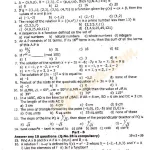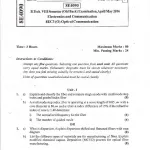What is the central theme of the story ‘A House is Not a Home’?
The central theme is about coping with change, emotional growth, and the realization that a true home is defined by love and belonging, not just a building.
Who is the author of the story ‘A House is Not a Home’?
The story is written by Zan Gaudioso.
How does the author feel at the beginning of the story?
At the beginning, the author feels lonely, isolated, and uncomfortable in his new school environment.
Why did the author find it difficult to adjust in his new school?
He found it difficult because he had no friends, felt out of place, and missed his old teachers and classmates.
What happened to the author’s house?
The author’s house caught fire and was destroyed in the blaze.
How did the fire affect the author emotionally?
He was devastated and felt like his entire world had fallen apart. He lost not only his possessions but also his sense of security.
How did the author’s cat play an important role in his life?
The cat was his only constant companion and source of emotional comfort after his father passed away.
What was the author’s reaction when he couldn’t find his cat?
He was heartbroken and deeply saddened, feeling like he had lost the last remaining connection to his old life.
How did people in the new school respond to his loss?
They showed unexpected kindness, gave him clothes, school supplies, and emotional support.
What change did the author experience in his new school after the fire incident?
He began to make friends, felt included, and realized people cared for him, which helped him overcome his loneliness.
What does the author mean by the title ‘A House is Not a Home’?
He means that a home is about the people and emotions tied to it, not just the structure itself.
How did the community support the author after the tragedy?
They offered donations, helped replace his belongings, and emotionally supported him through conversations and kindness.
How did the author’s attitude toward his new school change over time?
Initially hesitant and unhappy, he gradually warmed up to the new environment as people reached out and supported him.
What message does the story convey about resilience?
It conveys that with support, kindness, and inner strength, people can overcome even the most difficult emotional challenges.
What lesson does the story teach about loss?
The story teaches that while material losses can be painful, emotional connections and human kindness help heal and rebuild.
What symbolic role does the cat play in the story?
The cat symbolizes love, comfort, and continuity during a period of loss and transition in the author’s life.
How did the author finally reunite with his cat?
A woman who had found the cat contacted the author after seeing a flyer he had posted.
What emotions did the author feel when he saw his cat again?
He felt overwhelmed with joy, relief, and a sense of completeness.
What realization does the author come to at the end of the story?
He realizes that he is not alone, and that he has found a new home through the people who care about him.
What impact did the fire have on the author’s perspective of life?
It made him value relationships over material possessions and helped him grow emotionally.
How is the story relevant to teenagers?
It explores themes like change, loss, adaptation, and the importance of emotional support—common experiences in teenage life.
What does the story say about the importance of empathy?
It shows that small acts of empathy can deeply impact someone’s healing and sense of belonging.
How does the author’s relationship with his peers evolve?
From being isolated to being accepted and cared for, his peers help him feel part of the group.
Why did the author feel like an outsider in the beginning?
He had moved to a new school, left old friends behind, and wasn’t emotionally ready to adapt to the change.
What emotional journey does the author go through?
He journeys from loneliness and despair to acceptance, hope, and emotional healing.
How does the title contrast the meaning of house and home?
A house is a physical structure, while a home is filled with warmth, love, and human connection.
What role do memories play in the story?
Memories of the past add to the author’s grief but also help him appreciate the emotional support he receives later.
What does the author learn about friendship?
He learns that true friendship can come unexpectedly and that it brings emotional strength during tough times.
What role does school play in the author’s recovery?
School becomes a place of healing, connection, and new beginnings through peer support.
How did the loss of the house change the author’s understanding of life?
It made him realize that emotional connections are more valuable than physical possessions.
How does the story highlight the importance of community?
It shows that community can become an extended family in times of crisis.
What does the author say about material possessions?
He learns that while they matter, they are not as important as relationships and emotional bonds.
How does the story reflect on dealing with unexpected situations?
It portrays that unexpected events, while painful, can lead to personal growth and stronger relationships.
How did the act of others giving help him emotionally?
It made him feel valued, supported, and understood, helping him slowly rebuild his confidence.
What shows that the author was not expecting help from others?
He was surprised and moved by the generosity of his classmates, whom he hardly knew.
What did the fire symbolize in the author’s life?
It symbolized loss, disruption, and a turning point leading to emotional transformation.
Why is the story inspiring for young readers?
It teaches resilience, the power of empathy, and that one can find new beginnings even in tough times.
How does the story handle the theme of grief?
It portrays grief as a natural response to loss but also shows how support and time can help one heal.
How did the author’s views about change evolve?
He initially feared change, but later embraced it as a path to growth and new relationships.
What was the turning point in the story?
The turning point was when his classmates reached out after the fire, breaking his isolation.
How is the story structured to reflect emotional growth?
It moves from despair to hope, reflecting the author’s gradual emotional transformation.
What impact did kindness have on the author’s life?
Kindness restored his hope, helped him feel cared for, and showed him that he was not alone.
Why is the reunion with the cat so powerful?
It represents the recovery of a cherished bond and emotional closure after a period of intense loss.
What does the author’s story suggest about healing?
Healing takes time, but with the right support, it is possible to rebuild emotionally.
How did the small gestures from classmates make a big difference?
They made him feel noticed, accepted, and connected in a time when he felt lost.
What did the author learn about himself?
He learned that he could adapt, grow stronger emotionally, and connect with new people.
How did the author’s past experiences shape his emotional state?
Losing his father and being in a new school made him more vulnerable to feeling isolated and emotionally fragile.
What does the story teach about hope?
That even in the darkest times, hope can be found through love, kindness, and human connection.
How did writing this story likely help the author?
It may have helped him process his feelings, reflect on his journey, and share a message of resilience with others.
Would you like me to turn this into a downloadable PDF or format it for printing or study materials?
Recommended Indian Reference Books for ‘A House is Not a Home’ – With Authors, Publishers & Content Insights
-
Golden Guide English Literature – Class 9
Author: N.K. Aggarwala
Publisher: New Age International
Content: Includes textbook solutions, theme-based long and short answer questions, grammar applications, and critical analysis. -
Evergreen CBSE Self-Study in English Language & Literature – Class 9
Author: M.L. Aggarwal
Publisher: Evergreen Publications
Content: Detailed textbook explanations, chapter-wise Q&A, value-based questions, and practice exercises focused on understanding emotions and themes. -
Oswaal CBSE Question Bank Class 9 English Language & Literature
Author: Panel of Experts
Publisher: Oswaal Books
Content: Exam-focused short and long questions, MCQs, past year questions, and answer-writing strategies aligned with current CBSE pattern. -
Full Marks Guide English – Class 9
Author: Team Full Marks
Publisher: Full Marks Pvt. Ltd.
Content: Line-by-line explanation, textual Q&A, character sketches, and theme-based analysis to enhance literary understanding. -
Xam Idea English Language & Literature – Class 9
Author: Editorial Board
Publisher: VK Global Publications
Content: Case-based, competency-based, and subjective questions with model answers and theme discussions for ‘A House is Not a Home’. -
Together With English Language & Literature – Class 9
Author: Rachna Sagar Experts
Publisher: Rachna Sagar Pvt. Ltd.
Content: NCERT-based content, HOTS, integrated grammar, and extract-based questions with contextual answers. -
Arihant All in One English Language & Literature – Class 9
Author: Srishti Agarwal
Publisher: Arihant Publications
Content: Topic-wise textbook solutions, MCQs, long-form questions, and literary appreciation of the story. -
Saraswati English Communicative – Interact in English – Class 9
Author: Meenakshi Raman
Publisher: Saraswati House Pvt. Ltd.
Content: Activity-based questions, character analysis, personal response questions, and summary explanations. -
Cordova Learning Series – Communicative English – Class 9
Author: Reena Jain
Publisher: Cordova Publications Pvt. Ltd.
Content: Short/long answers, comprehension checks, skill-based activities, and theme reflections. -
Ratna Sagar English Literature Reader – Class 9
Author: Dr. Gauri Dhawan
Publisher: Ratna Sagar Pvt. Ltd.
Content: Story-based comprehension, evaluation questions, vocabulary tasks, and author’s perspective explanation. -
Cambridge School English Resource Book – Class 9
Author: Dr. K.S. Shukla
Publisher: Cambridge University Press India
Content: Literary insight, interactive activities, emotion-mapping exercises, and language development tasks. -
Laxmi English Reader – Class 9 CBSE
Author: Renu Anand
Publisher: Laxmi Publications
Content: Summaries, character evaluations, creative writing prompts, and practice questions on interpretation and values. -
Oxford New English Ferry – Literature Reader 9
Author: Anuradha Murthi
Publisher: Oxford University Press India
Content: Reflective questions, discussion activities, and analytical thinking related to ‘A House is Not a Home’. -
Frank Modern English Literature – Class 9
Author: Renu Gupta
Publisher: Frank Educational Aids Pvt. Ltd.
Content: Value-based questions, interpretation challenges, vocabulary improvement tasks, and personal response questions. -
CBSE Chapterwise Solved Papers – English Class 9
Author: Priya Tiwari
Publisher: Arihant Experts
Content: Topic-wise previous year solved questions, board-pattern practice sets, and theme-based exercises. -
MBD English Guide – Class 9
Author: Editorial Board
Publisher: MBD Group
Content: Comprehension skills, grammar integration, thematic reflection, and story-based evaluation. -
Selina CBSE English Communicative – Class 9
Author: R.D. Sharma (Panel)
Publisher: Selina Publishers
Content: In-depth character analysis, expression-based writing, and value-based interpretation tasks. -
Scholars Hub English Literature – Class 9
Author: G.S. Jha
Publisher: Scholars Hub Publications
Content: Extract-based questions, moral understanding, and empathetic response questions related to the story. -
Pearson Longman English Companion – Class 9
Author: Neena Kaul
Publisher: Pearson India
Content: Interpretation exercises, reflective activities, creative expressions, and inferential reasoning related to the text. -
Viva Education English Reader – Class 9
Author: Nita Arora
Publisher: Viva Education
Content: Personal response and life-based questions, character motivation, and life-lesson discussions from the story.
A House is Not a Home Question Answers – Expert Insights and Practice Guide
When it comes to understanding the emotional and narrative depth of A House is Not a Home, question answers play a critical role. This Class 9 English Beehive chapter explores themes of change, loss, belonging, and emotional resilience. For students preparing for exams or looking to strengthen their understanding, practicing well-structured questions and answers is essential.
The story captures a teenager’s struggle with adjusting to a new environment, compounded by the trauma of losing his house and pet in a fire. These events set the stage for a transformation that is both internal and external. The questions typically focus on how the protagonist evolves through this journey, the significance of relationships, and the meaning of home beyond walls and furniture.
One key strategy for mastering A House is Not a Home question answers is to focus on theme-based questions. These might ask you to explain how the concept of home is redefined by the end of the story. Responses should highlight the shift from viewing home as a physical space to understanding it as a place of emotional security and connection.
Character-based questions are also common. Students are often asked to describe the protagonist’s emotions or reactions during different phases of the story. When writing answers, it’s helpful to explore how the author expresses vulnerability, loneliness, and eventual comfort through realistic situations. Adding personal reflection to these answers makes them more meaningful.
Another important area is moral and value-based questions. Teachers and examiners may ask what the story teaches us about empathy, change, and the power of kindness. To answer effectively, relate the storyline to broader life lessons without straying from the text.
Extract-based questions have become increasingly relevant in recent exams. These are based on specific passages from the story and require interpretation. To tackle them, read the extract carefully, understand the tone, and explain how it connects with the overall message of the narrative.
Practicing short and long answer questions is essential. Short answers should be concise and to the point, ideally within 30–50 words. Long answers require structured paragraphs, with an introduction, supporting details from the text, and a concluding thought. Students should avoid over-explaining and instead aim for clarity and direct connection with the story.
It’s also helpful to understand language and tone. The story is written in a reflective, first-person narrative, and using a similar tone in answers adds authenticity. Avoid overly complex words—stick to accessible, student-friendly language that clearly communicates your understanding.
Using revision techniques like flashcards with key themes, character traits, or moral lessons can help retain important points. Group discussions or oral questioning can also enhance comprehension, especially when peers share different interpretations.
Teachers often recommend using sample questions that follow the CBSE format, including HOTS (Higher Order Thinking Skills) questions. These challenge students to think beyond the surface and offer analytical perspectives on the story.
Consistent practice with these types of questions not only improves exam performance but also builds literary sensitivity. With regular reading and structured writing, students can confidently approach any question from A House is Not a Home.
FAQ for A House is Not a Home Question Answers
What is the main theme of A House is Not a Home?
The main theme is emotional growth, highlighting how true belonging comes from relationships, not just a physical structure.
Who is the author of A House is Not a Home?
The story is written by Zan Gaudioso, a writer known for reflective and motivational storytelling.
Why is the title A House is Not a Home significant?
It emphasizes that a house is just a building, but a home is made through love, memories, and emotional connections.
What type of questions are asked in exams from this chapter?
Questions often focus on themes, character analysis, emotions, moral lessons, extract-based comprehension, and personal reflection.
What kind of answer format should students use for long answers?
Students should use an introduction, body, and conclusion with references to the story and its characters while maintaining clarity and structure.
How should students approach extract-based questions?
They should read the extract carefully, identify the tone and context, and relate it back to the broader message of the story.
Is the story suitable for value-based or moral-type questions?
Yes, it offers strong moral messages about resilience, kindness, change, and emotional strength that are ideal for value-based answers.
How can I prepare effectively for A House is Not a Home Q&A?
Review key themes, practice sample answers, analyze the protagonist’s emotions, and relate the story to real-life experiences.
Why is the cat important in the story?
The cat represents emotional comfort and continuity for the protagonist during a time of personal loss and upheaval.
How does the protagonist change by the end of the story?
He moves from isolation and sadness to feeling supported, accepted, and emotionally secure through community and friendship.
Can this story be used in personal response or diary-entry style questions?
Yes, the emotional nature of the story makes it ideal for creative formats like diary entries or personal reflections.
What are some good vocabulary words to use in answers for this chapter?
Words like resilience, transformation, belonging, empathy, connection, and transition work well in context.
Are real-life examples helpful in supporting answers?
Yes, relatable experiences and real-life connections can make your answers more insightful and meaningful.
How long should a good long answer be?
Usually 100–150 words, depending on the question, with a clear focus on the theme or message being addressed.
What tone should be used in writing answers for this story?
A thoughtful and empathetic tone that reflects the emotional depth of the narrative is best.
How can I remember the key points easily?
Use mind maps, theme cards, or summary notes that focus on turning points, emotions, and character traits.
What is the role of classmates in the story?
They act as a support system, helping the protagonist feel seen, understood, and emotionally uplifted after his loss.
Is this story ever asked in speaking or oral activities?
Yes, it’s often used in classroom discussions and speaking tasks to explore emotional intelligence and communication skills.
Why is this story important for Class 9 students?
It helps students understand and process emotional changes, encouraging empathy and personal growth through literature.
Latest Posts
- Step-by-step guide to download and apply for jee mains admit card 202
- Comprehensive 2025 government holidays and recruitment details for job seekers
- JEE Mains Admit Card 2025: Your Step-by-Step Guide to Downloading the Hall Ticket
- Everything You Need to Know About 2025 Government Holidays Recruitment
- Comprehensive Guide to rrb d group recruitment 2025 – Eligibility, Vacancies, and Application
- Detailed guide to nps trust recruitment 2025 vacancies, eligibility and apply process
- Comprehensive guide to hpcl recruitment 2025 notification, vacancies, and application process
- ignou bed admission 2025 complete recruitment guide with eligibility and process
- Comprehensive Guide to Indian Army Agniveer Recruitment 2025 Notification and Jobs
- Everything You Must Know About CBSE Board Exams 2025 Changes & New Rules






